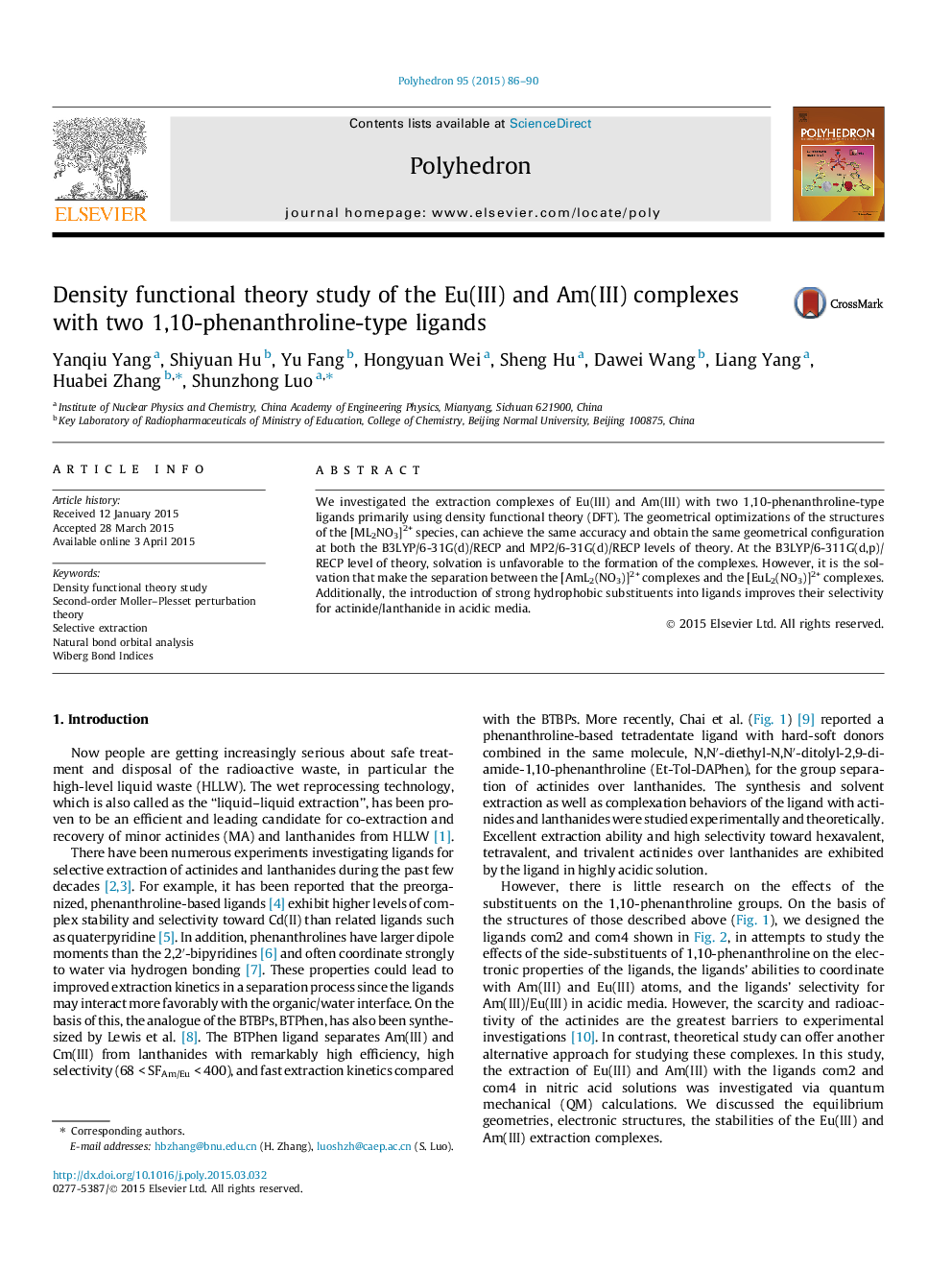| Article ID | Journal | Published Year | Pages | File Type |
|---|---|---|---|---|
| 1334380 | Polyhedron | 2015 | 5 Pages |
We investigated the extraction complexes of Eu(III) and Am(III) with two 1,10-phenanthroline-type ligands primarily using density functional theory (DFT). The geometrical optimizations of the structures of the [ML2NO3]2+ species, can achieve the same accuracy and obtain the same geometrical configuration at both the B3LYP/6-31G(d)/RECP and MP2/6-31G(d)/RECP levels of theory. At the B3LYP/6-311G(d,p)/RECP level of theory, solvation is unfavorable to the formation of the complexes. However, it is the solvation that make the separation between the [AmL2(NO3)]2+ complexes and the [EuL2(NO3)]2+ complexes. Additionally, the introduction of strong hydrophobic substituents into ligands improves their selectivity for actinide/lanthanide in acidic media.
Graphical abstractComplexes of Eu(III) and Am(III) with the two 1,10-phenanthroline-type ligands have been studied primarily with the density functional theory method. The solvation is unfavorable to the formation of the complexes. Additionally, the introduction of strong hydrophobic substituents into extractants improves their selectivity for actinide/lanthanide in acidic media.Figure optionsDownload full-size imageDownload as PowerPoint slide
